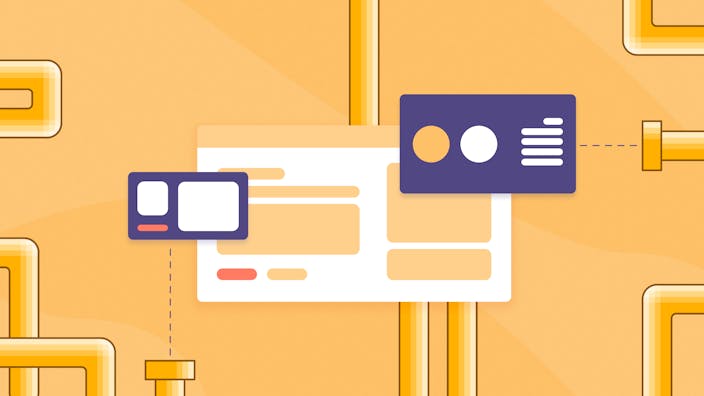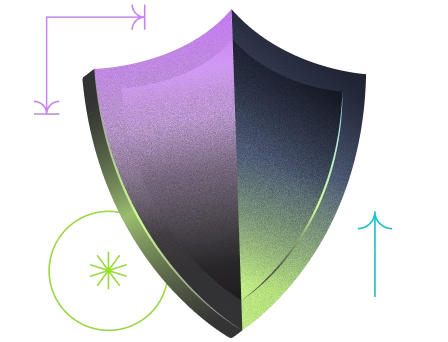In an increasingly competitive marketplace, having an excellent product or service is just the starting point. The real challenge lies in developing effective customer acquisition strategies that not only attract new customers but do so at sustainable costs while building long-term relationships.
Customer acquisition strategy has evolved far beyond traditional advertising. Today's successful businesses leverage multiple customer acquisition channels, sophisticated metrics, and data-driven approaches to build scalable growth engines. Whether you're a startup seeking your first customers or an established business looking to expand, understanding modern customer acquisition is crucial for sustainable growth.
This comprehensive guide will walk you through proven customer acquisition strategies, help you master key metrics like acquisition cost (CAC), and provide actionable insights to optimise your customer acquisition process for maximum efficiency and growth.
Understanding Customer Acquisition: Definition and Core Principles
Customer acquisition refers to the process of attracting and converting potential customers into paying clients for your business. It encompasses every activity, strategy, and touchpoint that moves a prospect through your customer acquisition funnel from initial awareness to completed purchase.
Unlike customer retention, which focuses on existing clients, customer acquisition specifically targets new prospects who have never purchased from your business. The customer acquisition process typically involves multiple stages: awareness generation, interest nurturing, consideration facilitation, and conversion optimisation.
NB:
Successful customer acquisition requires a systematic approach that aligns marketing efforts with sales processes, ensuring seamless customer journeys from first contact to purchase completion.
The Modern Customer Acquisition Landscape
Today's customer acquisition channels are more diverse and complex than ever before. Traditional methods like print advertising and cold calling have been supplemented—and often replaced—by digital strategies including:
- Search engine optimization and search engine marketing
- Social media marketing across multiple platforms
- Content marketing and thought leadership
- Email marketing and marketing automation
- Partnership and referral programs
- Influencer and affiliate marketing
Good to know:
According to HubSpot's 2025 State of Marketing report, businesses using multiple customer acquisition channels see 287% higher growth rates compared to single-channel approaches.
Mastering Customer Acquisition Cost (CAC): Calculation and Optimization
Customer acquisition cost represents one of the most critical metrics for business sustainability and growth planning. Understanding how to calculate, interpret, and optimise your customer acquisition metrics directly impacts profitability and scalability.
Calculating Customer Acquisition Cost
The basic customer acquisition cost formula is:
CAC = Total Acquisition Spending ÷ Number of New Customers Acquired
However, comprehensive customer acquisition costs calculation should include:
Cost Category | Components | Example |
|---|---|---|
Marketing Costs | Advertising spend, content creation, SEO tools | £15,000/month |
Sales Costs | Sales team salaries, commissions, tools | £25,000/month |
Technology Costs | CRM software, analytics tools, automation platforms | £3,000/month |
Personnel Costs | Marketing team salaries, benefits, training | £20,000/month |
Total Monthly Acquisition Spending: £63,000 New Customers Acquired: 210 CAC = £63,000 ÷ 210 = £300 per customer
This comprehensive approach to CAC calculation provides a more accurate picture of your true customer acquisition costs. Many businesses make the mistake of only including advertising spend in their calculations, which can lead to underestimating actual costs by 40-60%. By incorporating all related expenses—from sales team salaries to technology platforms—you gain realistic insights into what it actually costs to acquire each new customer.
Important:
Remember that CAC calculations should be specific to each customer acquisition channel when possible. Your cost cac customer might be £150 through organic search but £450 through paid advertising, helping you make informed decisions about budget allocation and channel prioritisation.
Industry Benchmarks and CAC Analysis
Average customer acquisition costs vary significantly across industries and business models:
- SaaS businesses: £100-£400 per customer
- E-commerce: £20-£200 per customer
- Financial services: £200-£1,000 per customer
- Professional services: £300-£1,500 per customer
Important:
Your acquisition cost should be significantly lower than your customer lifetime value (CLV). A healthy CAC:CLV ratio is typically 1:3 or better, meaning customers should generate at least three times their acquisition cost in lifetime value.
Proven Customer Acquisition Strategies for Business Growth
Digital Marketing Excellence
Search engine optimization remains a cornerstone of effective customer acquisition. Unlike paid advertising, SEO provides long-term, compound returns on investment. Focus on:
- Keyword research targeting customer acquisition-related terms
- Content creation addressing customer pain points and solutions
- Technical SEO ensuring website performance and user experience
- Local SEO for businesses serving specific geographic markets
Social media marketing offers powerful targeting capabilities and direct customer engagement opportunities. Develop platform-specific strategies:
- LinkedIn: B2B lead generation and thought leadership
- Facebook/Instagram: Visual storytelling and community building
- Twitter: Real-time engagement and customer service
- TikTok/YouTube: Video content and brand awareness
Content Marketing and Thought Leadership
Content marketing serves multiple functions within your customer acquisition strategy:
- Educational content establishing expertise and trust
- Problem-solving resources attracting prospects actively seeking solutions
- SEO benefits improving organic search visibility
- Lead magnets capturing prospect information for nurturing
Partnership and Referral Programs
Strategic partnerships can significantly amplify your customer acquisition efforts while reducing costs:
Partnership types include:
- Technology integrations with complementary software providers
- Channel partnerships with resellers and distributors
- Cross-promotional arrangements with non-competing businesses
- Affiliate programs leveraging third-party marketing efforts
Optimising Customer Acquisition Channels for Maximum ROI
Multi-Channel Attribution and Analysis
Understanding which customer acquisition channels drive the highest quality customers requires sophisticated tracking and attribution. Modern businesses typically use:
- First-touch attribution: Credits the first interaction
- Last-touch attribution: Credits the final interaction before conversion
- Multi-touch attribution: Distributes credit across multiple touchpoints
- Time-decay attribution: Gives more credit to recent interactions
Good to know:
Research by Salesforce indicates that businesses using multi-touch attribution see 15-35% improvement in marketing ROI compared to single-touch models.
Channel-Specific Optimization Strategies
Each customer acquisition channel requires tailored approaches for optimal performance:
Paid Search (Google Ads, Bing)
- Focus on high-intent keywords with commercial meaning
- Implement negative keyword lists to avoid irrelevant traffic
- Use ad extensions to improve click-through rates
- Test different landing page experiences for various keyword groups
Social Media Advertising
- Leverage platform-specific targeting capabilities
- Create native content that fits each platform's user behavior
- Use retargeting to re-engage website visitors
- Test different creative formats (video, carousel, static images)
Content Marketing
- Develop topic clusters around customer pain points
- Create content for different customer acquisition funnel stages
- Optimize for featured snippets and voice search
- Repurpose content across multiple formats and channels
Measuring and Analyzing Customer Acquisition Success
Essential Customer Acquisition Metrics
Beyond basic customer acquisition costs, comprehensive measurement requires tracking multiple customer acquisition metrics:
Primary Metrics:
- Conversion Rate: Percentage of prospects becoming customers
- Cost Per Lead (CPL): Total spending divided by leads generated
- Lead-to-Customer Rate: Percentage of leads converting to customers
- Time to Conversion: Average time from first contact to purchase
Secondary Metrics:
- Customer Lifetime Value (CLV): Total revenue expected from customer relationships
- Monthly Recurring Revenue (MRR): Predictable monthly revenue from subscriptions
- Churn Rate: Percentage of customers who stop buying over specific periods
- Net Promoter Score (NPS): Customer satisfaction and referral likelihood
Advanced Analytics and Reporting
Improve customer acquisition decisions through sophisticated analytics approaches:
Cohort Analysis: Track customer behavior and revenue generation across different acquisition periods, helping identify seasonal trends and channel performance variations.
Customer Segmentation: Analyze acquisition performance across different customer segments, revealing which types of customers are most valuable and easiest to acquire.
Channel Performance Analysis: Compare cost cac customer metrics across different acquisition channels, identifying the most efficient sources of high-value customers.
The forms contracts automation solution we've developed at Yousign helps businesses streamline their customer onboarding processes, reducing friction in the customer acquisition funnel.
Leveraging Technology for Customer Acquisition Excellence
Marketing Automation and CRM Integration
Modern customer acquisition strategies rely heavily on technology to scale personal interactions and maintain consistent prospect nurturing:
Marketing Automation Benefits:
- Lead scoring prioritising highest-value prospects
- Drip campaigns nurturing prospects over extended periods
- Behavioral triggers responding to specific prospect actions
- Personalisation at scale delivering relevant content to different segments
CRM Integration ensures seamless handoffs between marketing and sales teams, maintaining context and relationship history throughout the customer acquisition process.
Digital Document Management in Customer Acquisition
In today's digital-first environment, friction in document signing can significantly impact conversion rates. Prospects expect seamless, professional experiences throughout their buyer journey.
Document-related conversion barriers include:
- Printing and scanning requirements for contract signatures
- Email attachments creating security concerns
- Multiple revision rounds slowing deal closure
- Manual processing introducing delays and errors
At Yousign, our electronic signature platform eliminates these friction points, enabling businesses to close deals faster and improve their customer acquisition retention rates. Our clients report average deal closure time reductions of 70% when implementing digital signature workflows.
The simple electronic signature approach we advocate helps businesses remove the final barriers to customer conversion, ensuring smooth transitions from prospect to paying customer.
Common Customer Acquisition Challenges and Solutions
Budget Allocation and Resource Management
Many growing businesses struggle with optimal budget allocation across different customer acquisition channels. Common challenges include:
- Limited Marketing Budgets Solution: Start with low-cost, high-impact channels like content marketing and SEO. Focus on organic growth strategies before investing heavily in paid advertising.
- Uncertain Channel Performance Solution: Implement proper tracking and attribution systems before scaling spending. Test small budgets across multiple channels to identify the most promising opportunities.
- Resource Constraints Solution: Prioritise automation and systematisation. Use tools and platforms that amplify human effort rather than replacing strategic thinking.
Scaling Customer Acquisition Efforts
As businesses grow, maintaining effective customer acquisition while scaling presents unique challenges:
Maintaining Quality While Increasing Volume
- Implement robust lead qualification processes
- Develop standardised sales and marketing procedures
- Create comprehensive training programs for new team members
- Use technology to maintain personalisation at scale
Managing Increased Complexity
- Document and systematise successful processes
- Implement proper project management and workflow tools
- Establish clear communication protocols between teams
- Regular performance reviews and strategy adjustments
Important:
The effective employee management strategies for SMEs become crucial as your customer acquisition team grows and requires more sophisticated coordination.
Industry-Specific Customer Acquisition Approaches
B2B Customer Acquisition Strategies
Business-to-business customer acquisition strategies typically involve longer sales cycles and higher transaction values:
- Account-Based Marketing (ABM): Target specific high-value prospects with personalised campaigns and content, focusing resources on the most promising opportunities.
- Thought Leadership: Establish company executives as industry experts through speaking engagements, published content, and media appearances.
- Sales Development: Invest in dedicated sales development representatives who focus exclusively on prospecting and qualifying leads.
B2C Customer Acquisition Approaches
Business-to-consumer strategies often emphasise volume, speed, and emotional connection:
- Influencer Marketing: Partner with social media personalities who can authentically promote your products to their engaged audiences.
- Viral Marketing: Create shareable content and experiences that encourage organic customer advocacy and word-of-mouth growth.
- Performance Marketing: Use data-driven advertising across platforms like Facebook, Google, and emerging channels to reach consumers at scale.
Future Trends in Customer Acquisition
Emerging Technologies and Channels
The customer acquisition process continues evolving with technological advancement:
- Artificial Intelligence and Machine Learning: Enhanced predictive analytics, automated personalisation, and intelligent lead scoring are becoming standard capabilities.
- Voice Search Optimization: As smart speakers and voice assistants gain adoption, optimising for voice search queries becomes increasingly important.
- Interactive Content: Virtual reality experiences, interactive calculators, and personalised assessments create engaging touchpoints throughout the customer acquisition funnel.
Privacy and Regulation Considerations
Customer acquisition efforts must adapt to increasing privacy regulations and changing consumer expectations:
- Data Privacy Compliance: GDPR, CCPA, and similar regulations require transparent data collection and usage practices.
- Cookie-less Future: Prepare for reduced tracking capabilities by focusing on first-party data collection and retention strategies.
- Consent Management: Implement robust systems for managing customer consent and preferences across all customer acquisition channels.
The secure electronic signatures we provide at Yousign help businesses maintain compliance while creating smooth customer experiences during contract execution.
Frequently Asked Questions About Customer Acquisition
What's the difference between customer acquisition and customer retention?
Customer acquisition focuses on attracting new customers, while retention involves keeping existing customers engaged and purchasing. Both are essential for sustainable growth.
How often should I review my customer acquisition costs?
Monitor CAC monthly for trending, but conduct deep quarterly reviews to identify optimisation opportunities and budget reallocation needs.
Which customer acquisition channel should I prioritise first?
Start with channels where your target customers are most active and engaged. Test small budgets across multiple options before committing significant resources.
How do I know if my customer acquisition cost is too high?
Compare your CAC to customer lifetime value—if CAC exceeds 33% of CLV, you may need optimisation. Also benchmark against industry averages.
What's the typical timeframe to see results from customer acquisition efforts?
Paid channels can show immediate results, while organic strategies like SEO and content marketing typically require 3-6 months for meaningful impact.
Building Your Customer Acquisition Success Framework
Successful customer acquisition requires systematic approach, continuous optimisation, and commitment to understanding your customers' needs and preferences. Start with solid fundamentals: understand your target audience, calculate accurate acquisition costs, and implement proper tracking and measurement systems.
Remember that customer acquisition strategies should align with your overall business objectives and growth stage. Early-stage companies might focus on establishing market fit and building initial customer base, while established businesses can invest in sophisticated automation and multi-channel approaches.
Yousign's Role in Customer Acquisition Success
Throughout your customer acquisition process, document management and contract execution often represent critical conversion points. Prospects who have engaged with your sales process and reached the contract stage represent your highest-value opportunities—yet traditional signing processes can introduce unnecessary friction and delays.
Our electronic signature platform ensures that when prospects are ready to become customers, nothing stands in their way. From initial service agreements to ongoing contract renewals, Yousign helps businesses maintain momentum throughout their customer relationships.
The contract management capabilities we provide extend beyond simple signatures, offering comprehensive workflow automation that supports both customer acquisition and long-term relationship management.
Implementing Your Customer Acquisition Strategy
Creating effective customer acquisition requires commitment to testing, measurement, and continuous improvement. Begin by establishing baseline metrics, implementing proper tracking systems, and developing clear processes for lead qualification and nurturing.
Key implementation steps include:
- Audit current performance across all existing customer acquisition channels
- Establish measurement systems for tracking customer acquisition metrics
- Develop content strategies supporting each stage of your customer acquisition funnel
- Implement automation tools that scale your customer acquisition efforts
- Create feedback loops for continuous optimisation and improvement
The investment in systematic customer acquisition pays dividends through predictable growth, improved unit economics, and stronger competitive positioning. Companies that master these fundamentals build sustainable competitive advantages that compound over time.
Ready to Transform Your Customer Acquisition Process?
Discover how Yousign's electronic signature platform can eliminate friction in your sales process and accelerate customer conversions.








